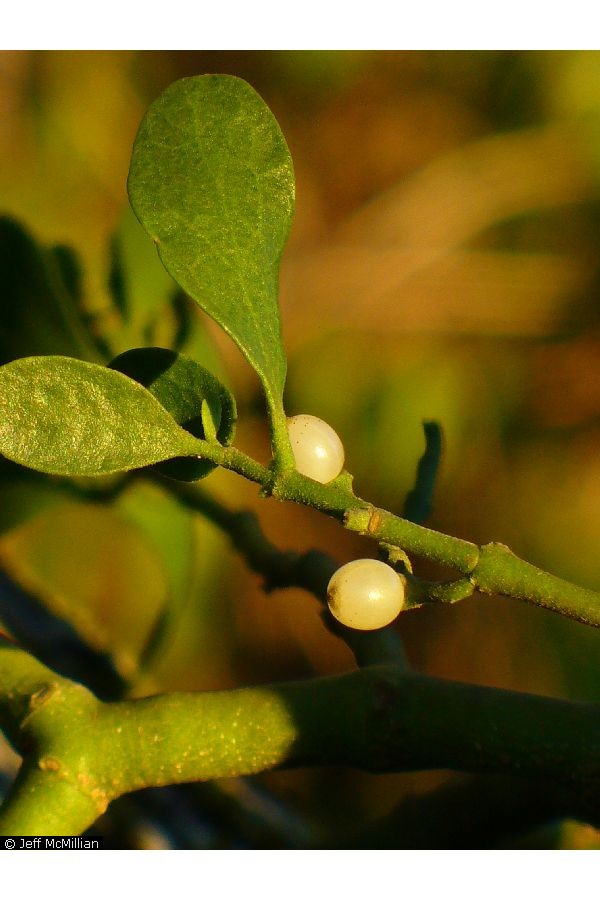Making Christmas More Fun!
Classification
Scientific Name: Phoradendron leucarpum
Common Name: American (Oak) Mistletoe
Aptly named for its hemi-parasitic nature, Phoradendron actually means "thief of the tree," in Greek. The common name, mistletoe, comes from two parts of Anglo-Saxon speech which aren't quite as sinister. "mistel" a common word for dung, and "tan" the word for twig, combine to form the word mistletoe; or "dung on a twig." This name became prevalent as it was noticed that mistletoe would appear where many birds had left droppings.
If you had to guess how the American Mistletoe was classified, you might say, "Its a plant!" or maybe if you were a science teacher, "Its within the phylum Magnoliophyta!" Whoever you are, the complete taxonomy of Phoradendron leucarpum below can help you learn a little more.
Taxonomy
Domain- Eukarya: American mistletoe is in the domain Eukarya because it is multi-cellular, has a nucleus, and is autotrophic.
Kingdom- Plantae: It has cell walls made of cellulose and is photosynthetic.
Phylum- Magnoliophyta: It is a Flowering plant.
Class- Magnoliopsida: It is a Dicotyledon.
Order- Santalales: Hemi-parasitic.
Family- Viscaceae: Christmas mistletoe family.
Genus- Phoradendron Nutt. : mistletoe.
Species- Phoradendron Leucarpum: American (Oak) Mistletoe
Phylogenetic Trees
The phylogenetic tree below shows where Phoradendron leucarpum fits within the grand scheme of life on Earth. It starts from the Domain (Eukaryote) and moves down to the Class (Magnoliopsida).

The phylogenetic tree below shows a more in-depth and more species-specific map of where Phoradendron leucarpum fits into its classification. It moves from the Order (Santales) to the species (Phoradendron leucarpum).

To learn more about the Interactions
of the American Mistletoe, click here!
Copyright © 2007, Design by: Sunlight webdesign
